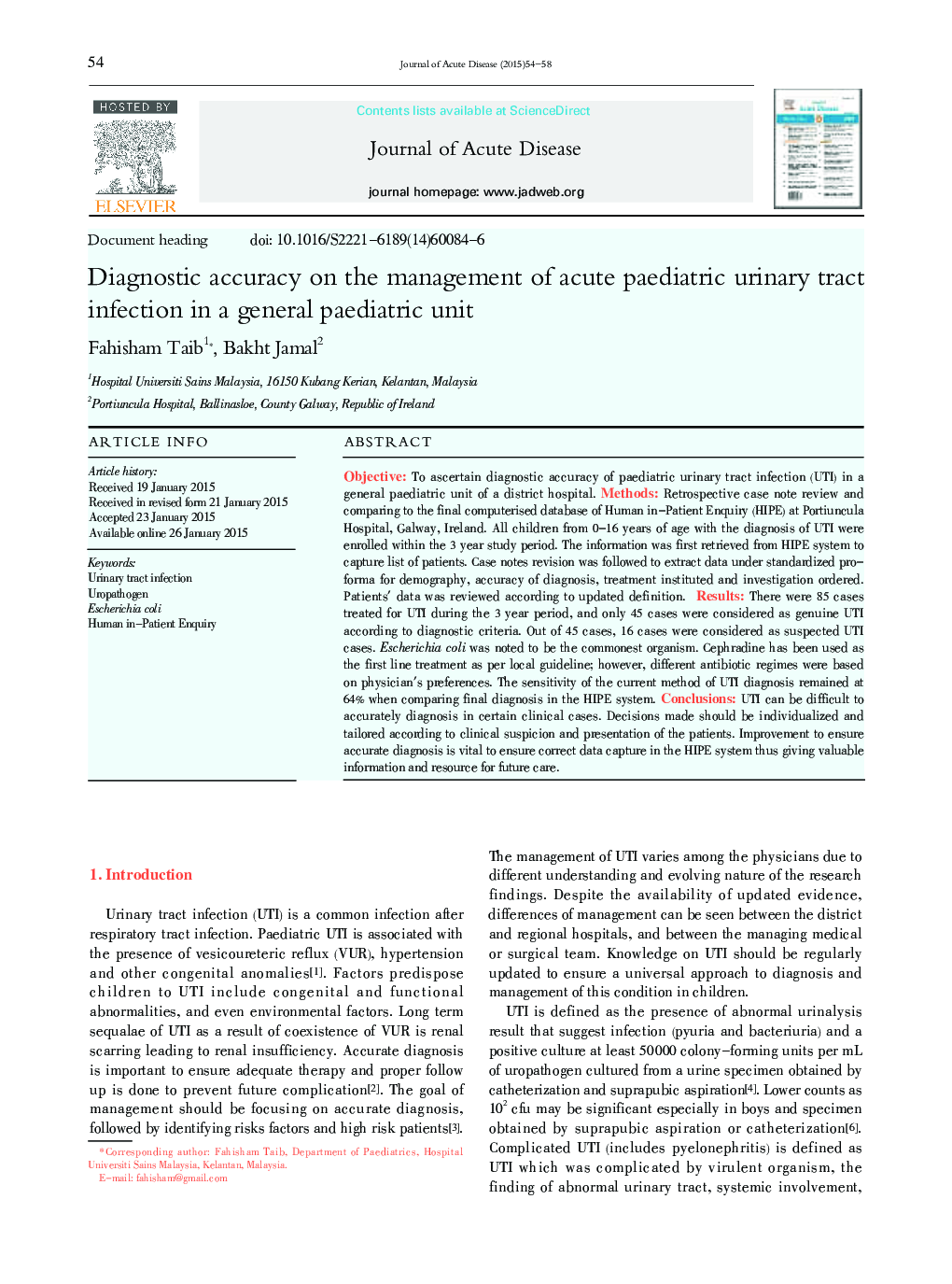| Article ID | Journal | Published Year | Pages | File Type |
|---|---|---|---|---|
| 3475211 | Journal of Acute Disease | 2015 | 5 Pages |
ObjectiveTo ascertain diagnostic accuracy of paediatric urinary tract infection (UTI) in a general paediatric unit of a district hospital.MethodsRetrospective case note review and comparing to the final computerised database of Human in-Patient Enquiry (HIPE) at Portiuncula Hospital, Galway, Ireland. All children from 0-16 years of age with the diagnosis of UTI were enrolled within the 3 year study period. The information was first retrieved from HIPE system to capture list of patients. Case notes revision was followed to extract data under standardized pro-forma for demography, accuracy of diagnosis, treatment instituted and investigation ordered. Patients' data was reviewed according to updated definition.ResultsThere were 85 cases treated for UTI during the 3 year period, and only 45 cases were considered as genuine UTI according to diagnostic criteria. Out of 45 cases, 16 cases were considered as suspected UTI cases. Escherichia coli was noted to be the commonest organism. Cephradine has been used as the first line treatment as per local guideline; however, different antibiotic regimes were based on physician's preferences. The sensitivity of the current method of UTI diagnosis remained at 64% when comparing final diagnosis in the HIPE system.ConclusionsUTI can be difficult to accurately diagnosis in certain clinical cases. Decisions made should be individualized and tailored according to clinical suspicion and presentation of the patients. Improvement to ensure accurate diagnosis is vital to ensure correct data capture in the HIPE system thus giving valuable information and resource for future care.
